Estimated reading time 13 minutes, 36 seconds.
Imagine a place where every flat stretch of dirt presents an opportunity. Where public land is free game, and the only thing that limits you is the capability of your aircraft. “The promise land,” and “Flying Mecca” are just a few terms used to describe eastern California stretching out to Utah.
For some, landing on mountain peaks, dried up lake beds, and meadows hidden among forests, is nothing new. Aviators have been finding new off-airport spots to land for decades, and will continue to do so throughout this vast continent. However, with the increasing popularity of sharing experiences on social media, backcountry flying is blowing up. Great things can’t be kept secret for long, and with aviation influencers like Trent Palmer and Kevin Quinn drawing mass attention to this type of flying, everyone wants to be part of the magic.
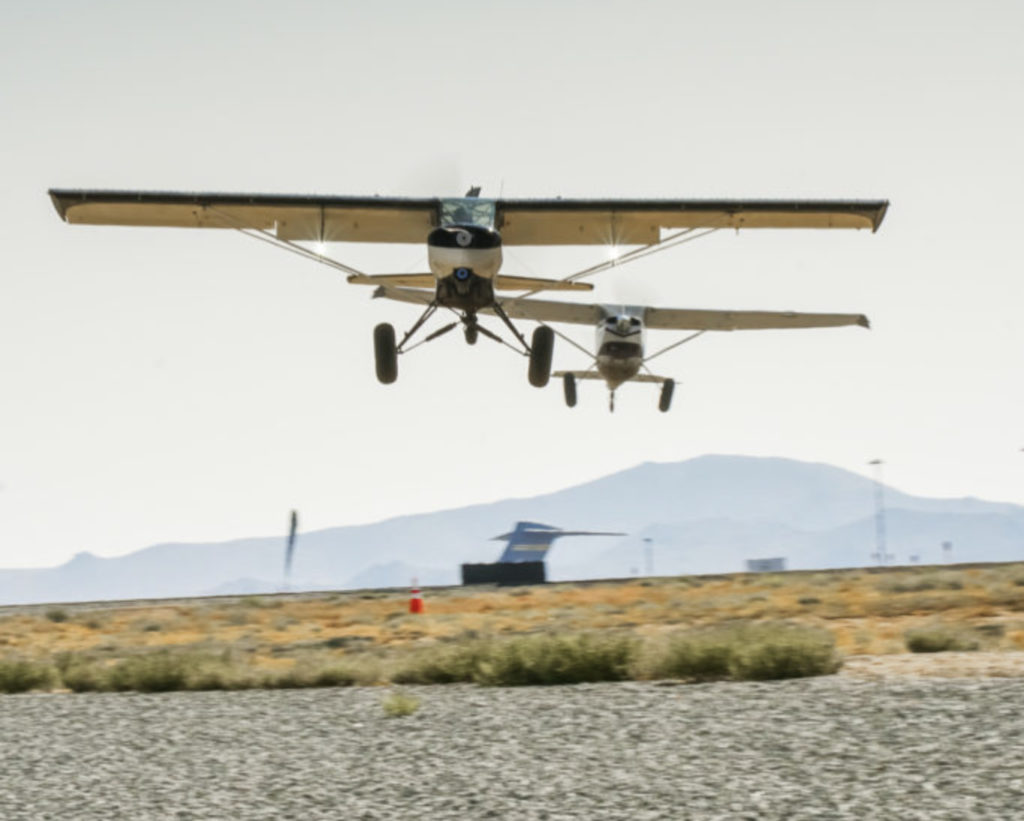
Whispers in the Desert
Among all the buzz around off-airport flying, those paying attention can’t help but hear about a “small” back country fly-in that takes place in the High Sierra Desert. What started as a small birthday party in 2010 has grown into one of the hottest aviation events of the year.
The High Sierra Fly-in (HSF), also known as “Burning Man for Pilots” — now in its 11th year — has played host to nearly 2,000 people and 500 aircraft. With all the attention that it’s been getting, many people are asking, “What’s so special about it?” To that, we answer with two words, “STOL Drag.” A concept that first came to life when pilot Kevin Quinn got thinking about how he could make traditional short take-off and landing (STOL) competitions more fun.
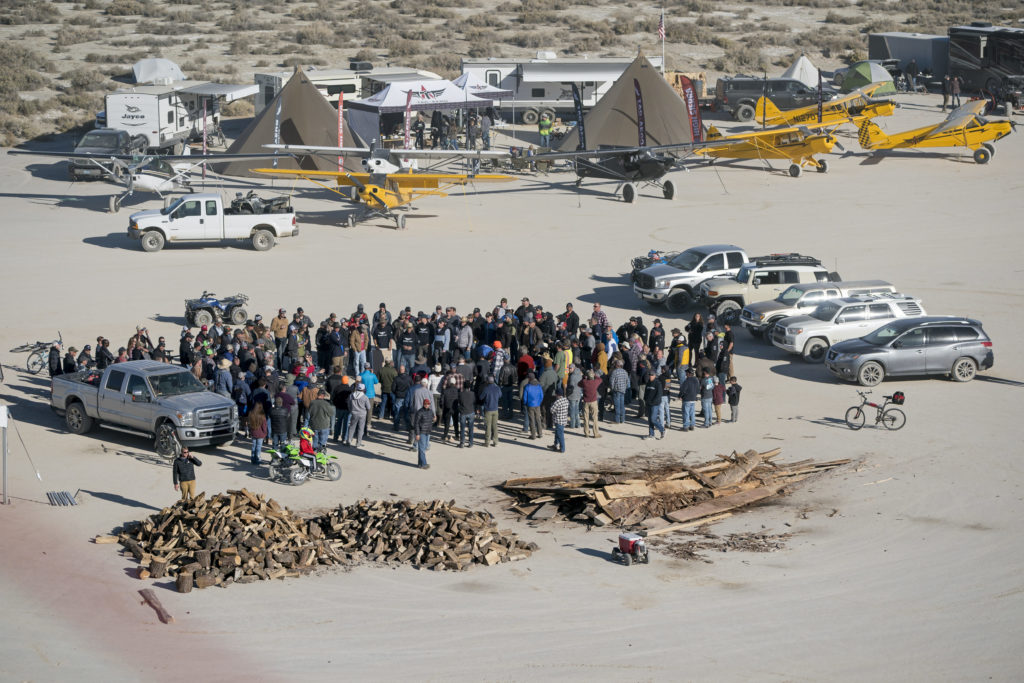
“I was sitting on the think tank one morning,” he laughed. “Traditional STOL is cool, but our backcountry flying is traditional STOL everyday. To be perfectly honest, it’s fun but, if you’re not 200 feet from the start or finish line, it’s like watching paint dry.”
With that question in mind, Quinn came to the idea of racing airplanes. He thought to himself, “Let’s line them up side by side in the desert and go down and back a mile.” And with one fell swoop, Kevin Quinn changed the High Sierra Fly-in forever.
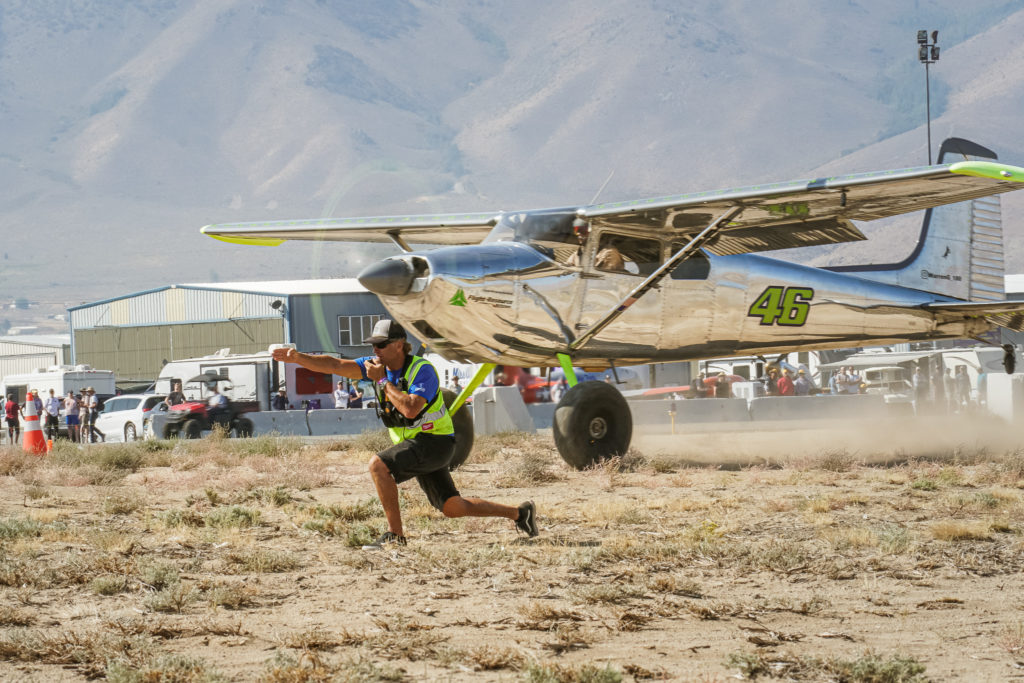
The Birth of STOL Drag
STOL Drag is a race between backcountry airplanes. Two aircraft fly down a 2,000-foot course with 1,000-foot overruns on each side. You start on a line, take-off, and fly 1,000 feet before putting the plane into a slip to slow the aircraft down. The pilot has to land on or beyond the line on the opposite side of the course. Once they get on the ground, they dissipate the airspeed using mechanical braking, come to a full stop on heading, turn 180 degrees, take off, and fly back down the course. The first aircraft to fly past the starting line and come to a complete stop, wins.
STOL Drag racing incorporates so many different skills, like power and energy management, direction and altitude control, and spot landing techniques; the psychological aspect of flying next to another aircraft comes into play, as well.

This exciting new form of racing is getting a lot of attention from general aviation pilots across North America. When asked why he thinks the High Sierra Fly-in has connected with so many people and amassed such a huge following, Quinn said, “We are flying airplanes that the common folk fly every day, it’s relatable.”
Uncle Bryan’s Blue Book
When it first began, the concept was simple: “Fly down, turn around, come back fast. But it has changed so much since then,” said Bryan Forsyth, one of the original attendants of the High Sierra Fly-in. Now a time keeper and judge, you’ll see Forsyth walking around with a blue book pressed to his chest. The mysticism around this book is a real thing. In it are the race times of every pilot who has ever competed in STOL Drag. The meticulous nature of the event organizers is a common theme. Those who think that the pilots involved in STOL Drag racing are outlaw reckless cowboys, will be surprised to find that they are laser focused when it comes to safety.
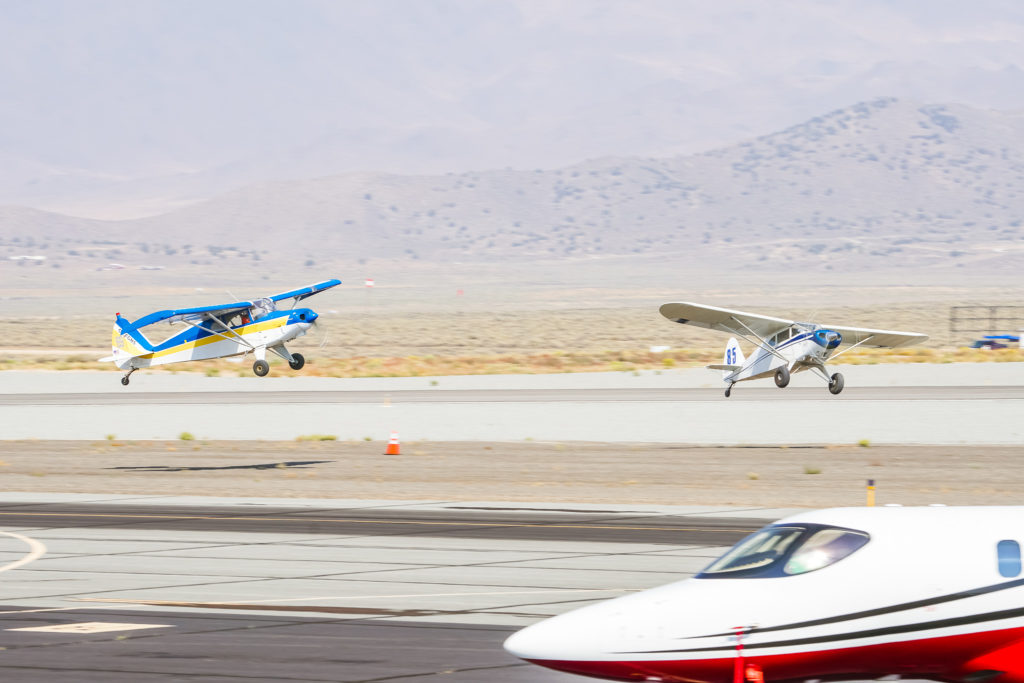
Over the years, they have built a strong relationship with the FAA and are now a nationally accredited race event. That’s right, this group of perceived intrepid backcountry pilots took an enormous amount of time to create procedural manuals, a pilot safety course, and more. Under this national accreditation, the FAA has given them the power to issue race cards which give pilots the ability to fly at any one of their STOL Drag events. They are the newest race class to join the Reno Air Races in 21 years, and the only race class with national accreditation, so they can take their show on the road.
Making Good Pilots Better
STOL Drag is making good pilots better, according to Kyle Bushman, pit boss and A&P.
“It’s teaching someone to fly the airplane beyond the basic private pilot level. It’s teaching you to have too much energy, dissipate the energy, and land the airplane on a spot which in an emergency situation is king.”

The evolution of STOL Drag and the revival of backcountry flying has been a natural progression. “We grabbed on to the tail of a tiger and we are holding on; [we] have zero clue where it’s going, but we strongly feel it’s in a good direction for aviation,” Bushman continued.
When asked if the organizers missed the old days, when HSF first began, everyone agreed that they were happy to have been a part of it, but were excited for the prospective future.
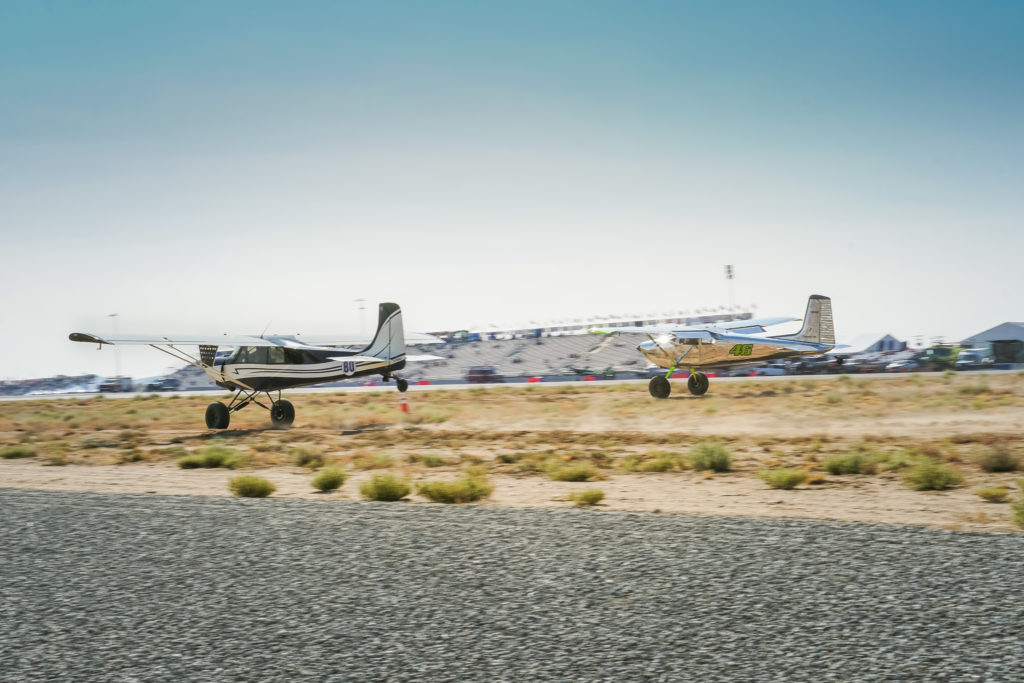
Aside from making good pilots better, STOL Drag racing is also contributing to the growth of the aviation industry. “Racing drives the industry, and by doing this we are pushing technologies in general aviation,” said Bushman. Currently, a majority of experimental aircraft manufacturers have an average of a two-year waitlist for their bush planes. The backcountry flying revival is real, and it’s all thanks to STOL Drag racing and the aviation influencers who support it.
Advise on initial contact that you have information: Sierra
With so many aircraft flying in to the High Sierra Fly-in, safety is always the focus of the event organizers. A special NOTAM dubbed “STOLtam” is issued every year, which includes the specialized approach procedures. Created by professional air traffic controllers, the STOLtam includes waypoints, entry and departure procedures, mandatory reporting points, radio frequencies, go around procedures, holding procedures, ground operations, and more. Adherence to these procedures is taken very seriously, and deviation from them may cause the controllers to shut down the airspace until the departure of the obstructing aircraft.
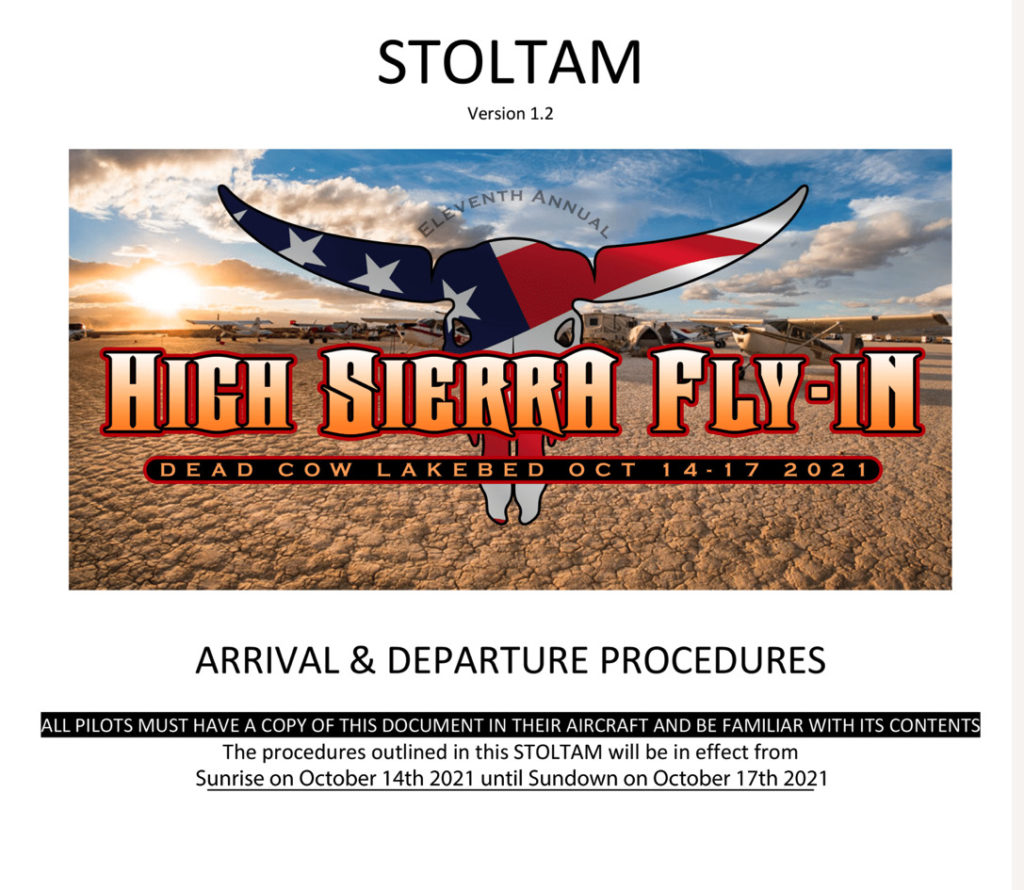
The Men and Women of STOL Drag
Although STOL Drag is a competition, the ultimate goal — aside from safety — is to have fun. HSF was a grassroots movement with the intent to build community within the backcountry of California and Nevada, and it continues to be that today.
When you speak to its founding members, you can see how much it means to them; they all stand behind the idea that HSF and the STOL Drag races are for everyone. It is not an exclusive event, but a gathering meant to connect and inspire aviators. With a massive, dried up lake bed, they are able to accommodate aircraft of all sizes — from small RVs to PC-24s. Skies is looking forward to seeing the progression of STOL Drag racing. It is re-invigorating general aviation, and is undoubtedly the best thing GA has going for it right now.








